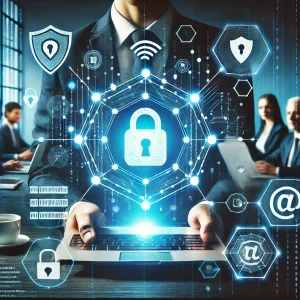
In fact, many of today’s most effective scams rely on busy people making quick decisions and not having time to double‑check what they’re doing.
Staying informed is one of the best ways to stay protected. So here are five scams we’re seeing right now:
Robocall scams
With artificial intelligence, scammers can clone someone’s voice using only a short audio clip. You get a call that sounds exactly like a supplier or even a colleague, asking you to urgently confirm bank details. It feels genuine, but it isn’t.
Some scams even use this information to carry out a “SIM swap”, tricking a phone provider into moving your number to a criminal’s SIM card so they can intercept security codes.
Crypto investment scams
A convincing email or social media post might offer an incredible return on a business investment. Some of these projects, known as “rug pulls”, are designed to collect funds and then disappear, leaving investors with nothing.
Romance scams (sometimes called pig‑butchering scams)
These might sound unrelated to business, but they’re not. Scammers build trust over weeks or months, often through social media or messaging apps, and then persuade someone to share sensitive information or even send money.
In some cases, they use AI‑generated images or videos to make the scam more believable and later threaten to leak personal material unless they’re paid.
Malvertising
Criminals hide malicious links inside paid ads on legitimate sites. An employee looking for a new supplier or tool could click an ad and unknowingly install malware onto a company laptop.
Formjacking
This is where criminals inject code into an online checkout form to steal payment or login details. If staff buy supplies or services from websites that aren’t secure, those details can be intercepted.
The common thread is simple: these scams exploit human attention and trust.
Regular reminders and training help staff stay alert, question unexpected requests, and think twice before clicking. A little extra caution can stop a scam before it starts.
We can help you make sure your team is vigilant about these scams and more. Get in touch – email info@mytechexperts.com, or call (734) 457-5000

 We hear about security breaches all the time. But it’s easy to think, “That won’t happen to us.”
We hear about security breaches all the time. But it’s easy to think, “That won’t happen to us.”
 File storage and transferring hold a very dear place in most people’s lives.
File storage and transferring hold a very dear place in most people’s lives.
 Your team is the first line of defense against cyber threats, but without proper training, they may also be your biggest vulnerability. From spotting phishing emails to practicing safe browsing habits, employee cybersecurity training is essential for protecting your business.
Your team is the first line of defense against cyber threats, but without proper training, they may also be your biggest vulnerability. From spotting phishing emails to practicing safe browsing habits, employee cybersecurity training is essential for protecting your business.